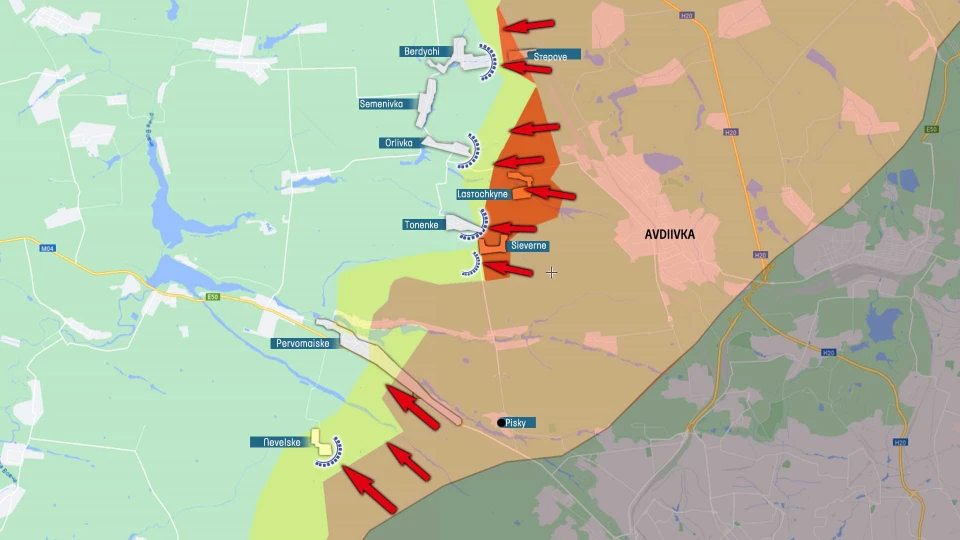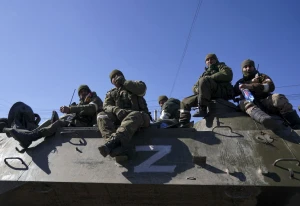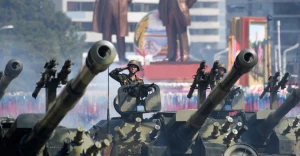
Creating missile coalition and new Russian offensive possibility. Serhiy Zgurets's column
After the Paris meeting on February 26, a missile coalition was announced by the French President, marking the ninth alongside aviation, tank, and artillery efforts
Su-34 Russian Bombers' Shootdown analysis
Starting with some good news: on February 27, the Ukrainian Air Force successfully downed two Russian frontline bombers, Su-34. Both aircraft were shot down on the eastern front, the first at 10:00 in the morning and the second around 2p.m. It's worth noting that Russia employs Su-34s for precision bombing missions. These bombers pose a significant threat to Ukrainian troops on the front lines, with an estimated bombing range of about 70 km. These are the sixth and seventh Su-34s brought down by the Air Force since February 17. Additionally, during this period, two Su-35 fighters and one A-50U long-range radar reconnaissance aircraft were also successfully intercepted.
With such losses of combat and special aviation, the Russians should think about stopping their air assaults for at least some time. Lieutenant General Mykola Oleshchuk, the commander of the Air Force, wrote about this on February 27.
Forming a missile coalition: strengthening defense strategies
Another piece of good news: following a meeting in Paris, a missile coalition was formed, as announced by the President of France. Macron welcomed representatives from 20 European states supporting Ukraine in its struggle against Russia. This marks the ninth coalition, in addition to aviation, tank, and artillery alliances. The French President explained that this coalition was established to provide Ukraine with more capabilities for strikes on Russian territory, including the transfer of bombs and missiles of medium and long range. According to Macron, France intends to mobilize all willing states with the capacity to supply such new equipment.
Macron did not specify the details about the weaponry, but he mentioned the list of countries involved in this initiative. However, it's worth noting that when discussing medium and long-range missiles, it typically refers to systems with a range of over 1,000 km according to consistent assessments. While this might not align precisely with Macron's intentions, it raises questions about mobilization and supplies for Ukraine. Chiefly, this pertains to supporting existing capabilities, particularly the provision of French and British cruise missiles like SCALP and Storm Shadow, which have been delivered in quantities of tens. Currently, these missiles represent the longest reach in the Ukrainian Air Force arsenal with a striking distance of nearly 300 km, and they have demonstrated effectiveness, notably shown by the destruction of a Russian submarine undergoing repairs using one of these cruise missiles.
France has pledged to transfer an additional 40 SCALP cruise missiles to Ukraine, while Britain has also announced supplementary deliveries of Storm Shadow missiles this year. Considering the effectiveness of these missiles, one can be assured that strikes on Russian targets will continue. However, the question arises whether this tandem will be complemented by the addition of the third German TAURUS missile. We know that the Bundestag has approved the transfer of these missiles to Ukraine, but German Chancellor Olaf Scholz still believes it's not timely, as he explained before the Paris meeting. There are approximately 200 operational TAURUS missiles in Germany, but there are also technical integration challenges, especially on the Su-24 aircraft and even more so on the F-16 fighters. Germans claim that it will take about a year and a half to integrate TAURUS onto the F-16.
Let me remind you that recently an agreement was signed between the Ukrainian defense industry and the German branch of the MBDA consortium outlining areas of cooperation between Ukraine and Germany. Perhaps the Ukrainian side will be able to explore options for extending the concept of creating affordable yet equally effective means of strike, leveraging Germany's potential.
As part of this missile-bomb coalition, France promises to transfer a significant quantity of its precision-guided bombs, with a range of up to 70 km initially and potentially up to 200 km in the future. This means that the projects exist; the main task is to scale them up and utilize the potential of this coalition to develop our national projects and scale up the transfer of more missile weapons to Ukraine.
About the situation on the front line
The situation is difficult on all fronts, including Avdiivka and to the west of Avdiivka, where for the second consecutive day we have been observing the Russian troops breaching Ukrainian defenses.

Yesterday were talking about Lastochkine, today we are talking about Stepove and Sievierne. In other words, the enemy is actually using its numerical superiority or some tactical features to push through Ukrainian defenses.
Viktor Kevliuk, military expert at the Center for Defense Strategies, reserve colonel of the Armed Forces of Ukraine, said that the Russian forces have engaged two armies in the area of Avdiivka, the 2nd and 41st, and almost the entire 1st Army Corps, which is larger than the two armies combined. As a result of the last five days of fighting, on February 27, the Command of the Tavria Operational and Strategic Grouping decided to withdraw troops from several positions. Two battalions of the 3rd Assault Brigade, which were responsible for the withdrawal of the garrison from Avdiivka, took up defense along the Berdychi-Semenivka-Umanske-Yasnobrodivka line. The 53rd Brigade withdrew from Tonenke, avoiding encirclement. The 47th Brigade is holding back the attacks of the Russian 15th motorized rifle brigade. The Russian troops captured Lastochkine, Sievierne and Tonenke with the forces of the 30th, 35th, 55th and 74th separate motorized rifle brigades. Now, relying on the positions in Tonenke, Lastochkine and the area of the Coke plant, he has begun to assault Orlivka from the east and south. Positional fighting continues near Novobakhmutivka, Stepove, Berdychi, Pervomayske and Nevelske. The situation is difficult but under control. The troops of the Tavria operational and strategic grouping are resisting, trying to gain a foothold in favorable positions and continue to inflict maximum losses on the enemy.
Defensive fortification of borders and positions
The reserve colonel of the Armed Forces of Ukraine believes that the problem of operational support for combat actions should be considered as a systemic issue. During the reform of the Armed Forces in the period from 2000 to 2010, practically all forces and means of the so-called senior commander were reduced. This means that at the strategic operational level, the respective commanders either do not have their own forces and means, or they have them in insufficient quantity, making it impossible for them to fulfill tasks in the interests of the troops. In 2014-2015, several steps were taken to overcome this problem, but it was not fully resolved. Currently, the General Staff is at a crossroads and must choose between restoring the combat readiness of combat brigades and forming reserves, but resources, primarily human resources, are insufficient to solve all the problems. Therefore, the issue of fortifying the frontlines and positions cannot be fully resolved by the forces and means of the operational and strategic level alone. And all this burden falls on the shoulders of the commanders of combat brigades and the personnel of the brigades, which is not right.
The military expert from the Center for Defense Strategies pointed out that defense planning and planning for defense are two entirely different processes, with the latter stemming from the former. Everything one needs to know about defense planning is outlined in the relevant law of Ukraine. The pinnacle of this planning is the Strategic Defense Bulletin, which is not related to war or combat operations. Another law on defense in Ukraine establishes the procedure for developing defense planning documents. This law stipulates that for organizing the defense of the country, the President of Ukraine, upon the Cabinet's recommendation, approves the structure of the defense plan. The defense plan is a document with 12 sections detailing the content, scope, executors, procedures, and deadlines for various measures to prepare the state for defense. And there is one line about military actions. Accordingly, based on the state's defense plan developed by the Ministry of Defense and coordinated by the Cabinet, the military, receiving documents from this plan, begin strategic defense planning. This is a completely different document, and Ukrainian legislation does not provide for any annual war plans.
About the Armed Forces audit
Kevliuk commented on the audit of the Armed Forces, stating that it is generally conducted within the framework of defense reviews, which culminate in a new Strategic Defense Bulletin. However, in our situation, there is no time to conduct reviews, but there is a need to understand the actual state of affairs in the Armed Forces. In his opinion, it is very relevant for the new head to familiarize himself with the real state of the entity he is appointed to manage, so this is a positive step. The information obtained by the head as a result of this audit will help him make informed decisions about who will continue to carry out combat operations, and he will also have a complete, comprehensive picture of the resources at his disposal. Perhaps our discussions about the lack of strategic reserves will finally turn into a process of their formation and deployment. Therefore, the audit is a necessary step that needs to be taken, as it has been two years of war, and the situation needs to be updated.
About the new Russian offensive
An officer noted that regarding the likelihood of a new Russian offensive in the summer, today we see that the Russian forces are focused on three tasks. Firstly, on the Vuhledar front, they aim to break through to Kurakhove, flank our forces defending Vuhledar, and attack the Ukrainian rear. On the Kupyansk front, they are actively pursuing the capture of Kupyansk itself and gaining access to the banks of the Oskil River. Additionally, a new direction has emerged – Chasiv Yar – where the Russian troops are attempting to advance from directions such as Bakhmut, Kostiantynivka, Druzhkivka, and Lyman to reach Sloviansk and Kramatorsk. These are extremely challenging tasks that cannot be completed before the Russian presidential elections. After the elections, Mr. Kevliuk anticipates a likely announcement of open mobilization in Russia. However, firstly, mobilization needs to be carried out, and secondly, a series of measures need to be taken with the mobilized resources to form combat-ready units from them.
It is physically impossible to accomplish this work by May or June. Russia does not have ready-made strategic reserves today. The enemy's operational reserves have been essentially depleted in the battles around Avdiivka and Robotyne. Therefore, it is not expected that the invading Russian army will be ready to conduct operations on at least one operational front. The invaders have no chance of success. However, for September-October, this is quite possible, as a period of 4-6 months will allow them to deploy reserves and equip them with combat vehicles. This may not happen before autumn, meaning there will be an offensive, but not in June.
- News













































